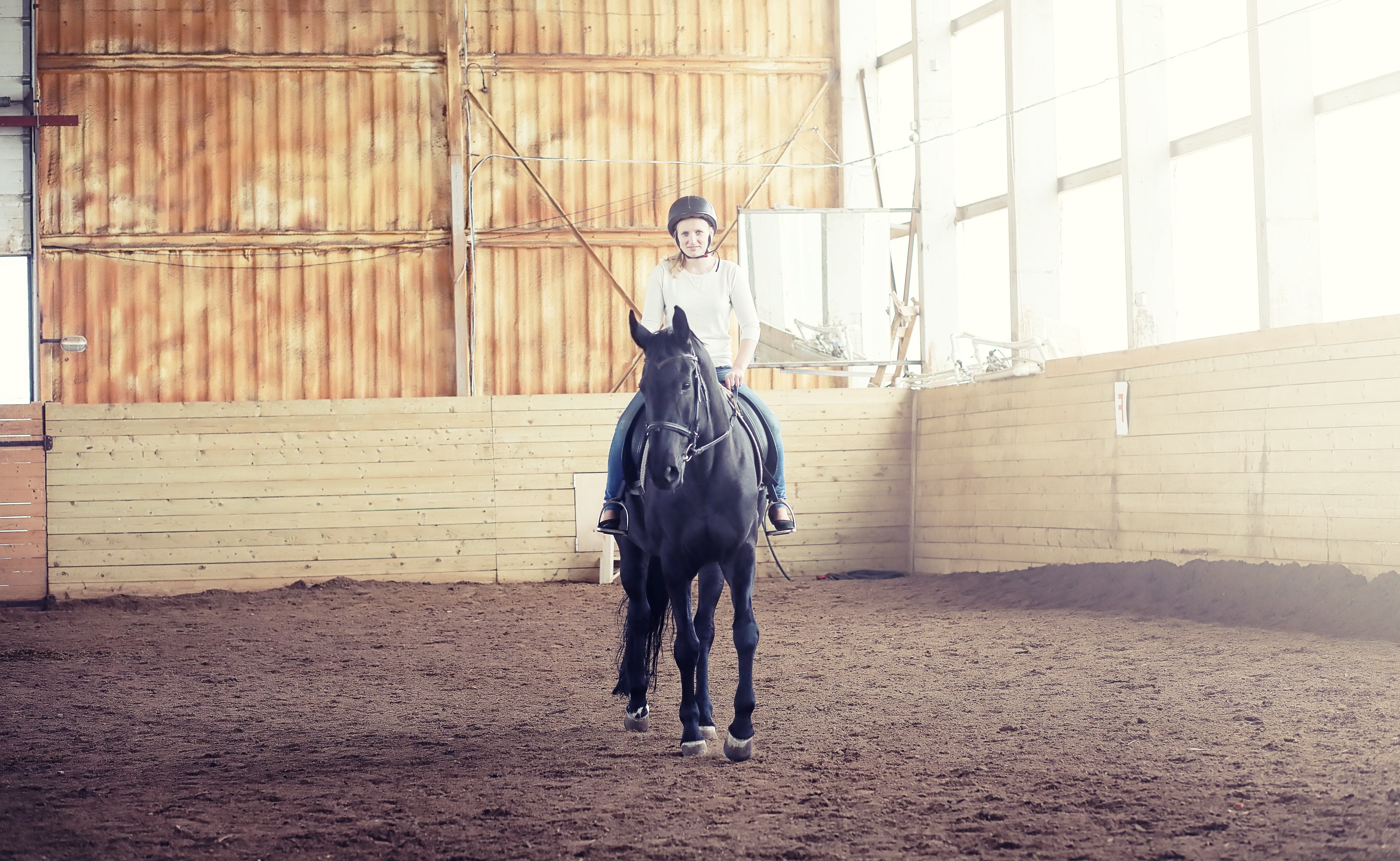Home > Horse Care > Study suggests deeper harrowing is best for arena footing
Study suggests deeper harrowing is best for arena footing
- October 20, 2025
- ⎯ Equus
A study suggests that superficial harrowing of your arena may not be producing the results you expect.
Researchers at the Animal Health Trust in Newmarket, England, and the Swedish University of Agricultural Sciences in Uppsala collaborated to investigate the effects of harrowing, also called “dragging.” In this common maintenance practice, a tractor or all-terrain vehicle is used to pull an attachment with tines over the arena surface to break up the top layer of footing. Regular harrowing is thought to increase the cushioning effect of the footing, reducing the risk of concussive injury.

The study was conducted in 11 different arenas that used one of two types of footing mixtures: sand with rubber, or waxed sand with fiber. “Various forms of sand with rubber are available and were used in the study arenas. Popular variations in the U.K. include sand with rubber chips mixed together or sand with rubber strips over it,” says Carolyne Tranquille, BSc. “Waxed sand with fiber is wax-coated sand with strips of carpet fiber or felt mixed together.”
Prior to harrowing, the researchers performed “drop tests” in each arena, measuring horizontal and vertical deceleration and loading to determine the shock-absorbing properties of the footing. “The test was carried out with an Orono Biomechanical Surface Tester, which is a hoof-shaped projectile that drops to the ground and is fitted with accelerometers and load cells,” says Tranquille. “The system used in the study replicates loads and forces applied by a 700-kilogram [about 1,550 pounds] cantering warmblood to the arena surface.”
The arenas were then harrowed using each facility’s regular equipment and preferred techniques, and the drop tests were again performed. Comparing the results of each test, the researchers found that superficial harrowing did not have a significant effect on the properties of sand with rubber footing.
On the waxed sand with fiber footing, superficial harrowing caused significant decrease in maximum vertical deceleration and maximum vertical load, but the effect was short lived. “Our data indicated that the waxed surface returned to the same level of firmness as pre-harrowing in three drop tests,” says Tranquille. “This suggests that superficial harrowing may not be the most suitable maintenance technique of this surface type. Harrowing with deeper tines may be more suitable.”
Click here to read about a study linking hard footing with injury risk.
Tranquille says her group is repeating the study using a larger number of arenas and standardized harrowing equipment and techniques, but the current available data suggests that a “one-size-fits-all” approach to arena maintenance may be misguided. “The fact that superficial harrowing had no effect on one surface type suggests that different types of surface may need different types of maintenance. Deep harrowing, leveling, rolling or even a combination of these may be more suitable for different surface types.”
Reference: “Effect of superficial harrowing on surface properties of sand with rubber and waxed-sand with fibre riding arena surfaces: a preliminary study,” The Veterinary Journal, October 2014
This article first appeared in EQUUS issue #450
Don’t miss out! With the free weekly EQUUS newsletter, you’ll get the latest horse health information delivered right to your in basket! If you’re not already receiving the EQUUS newsletter, click here to sign up. It’s *free*!





